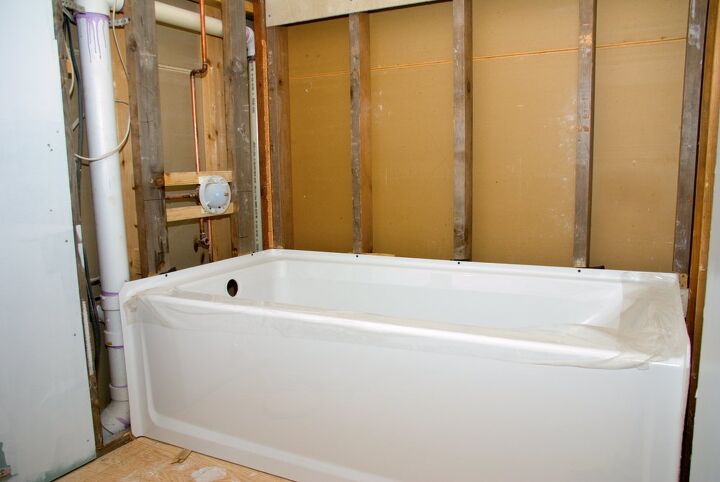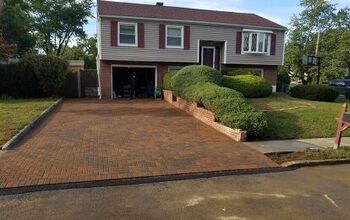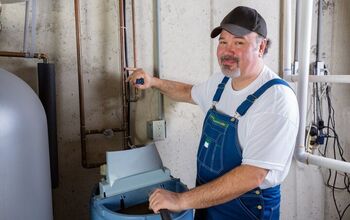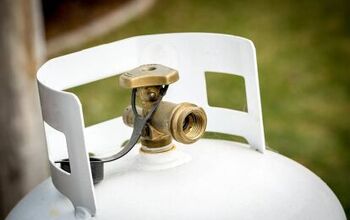2022 Bathtub Replacement & Installation Cost

Nothing beats a nice, warm bath after a long and exhausting week at work. Showers are great for convenient comfort, but the refreshment you get from a long soak in the bathtub is unmatched. Those reasons help explain why bathtubs are highly sought after.
Do you want to install a bathtub of your own? It’s important to know what you’re getting into before you seek a replacement or a new installation. Adding a new bathtub to your home is not going to come cheap.
The price range for just the bathtub itself goes from as low as $150 all the way up to $20,000. If you’re planning to add some important accessories, you may have to add $1,800 to your bill. Labor costs for the installation of the new tub range from $400 up to $1,900.
Transform your home bathroom into your own sanctuary for relaxation by installing a new bathtub. Learn more about all the expenses attached to that new installation by continuing with this article.
Average Cost to Install a New Bathtub
| Expense Type | Price Range |
| Bathtub Cost | $150 to $20,000 |
| Bathtub Accessories | $100 to $1,800 |
| Labor Costs | $400 to $1,900 |
| Labor Costs for Special Installations | $90 to $1,300 |
Cost of a New Bathtub
Homeowners have to account for numerous expenses if they want a new bathtub. Probably the biggest expense though is going to be the new bathtub itself. There is a wide range of prices when it comes to new bathtubs.
On the low end, you can find bathtubs that are on sale for around $150. Those can work as terrific budget-friendly additions to different types of bathrooms.
On the opposite end of the spectrum are the finely crafted fixtures that double as major expenses. You can find bathtubs on the market that are on sale for $20,000.
Numerous factors affect how much bathtubs cost. Among the most significant factors are the type of bathtub you’re getting, how it’s installed, and its material composition. You have to take all of those things into consideration before you make a final purchase.
Things to Do Before Installing a New Bathtub
Before we even get into those factors that affect pricing, let’s take a moment to go over some installation prerequisites. You must keep the following prerequisites in mind in order to avoid making the wrong purchase.
Ensure You Have Space in Your Bathroom for the New Bathtub
First and foremost, you should check if you have enough space in your bathroom before buying a tub. Don’t just assume that whatever bathtub you purchase will fit into your bathroom. This is easier to figure out if you already have an existing tub. You can just use your current bathtub as a reference when selecting a replacement.
Bust out the tape measure and note some numbers. Measure how long the tub is by extending your tape measure from one outer edge to the other. You should also check how wide and tall your current bathtub is.
With those numbers in hand, you now know the standard measurements for a bathtub that will fit inside your bathroom. You can also measure the space itself to get a better idea of how much room you have to work with.
Also, homeowners can opt to install a smaller bathtub if they don’t have a ton of space available. There are bathtub models out there that top out at around 55 inches in length and measure 30 inches wide. They are also about 15 inches tall, which makes them easier to fit into the bathroom.
Check if the Bathtub Can Fit Through the Doorway
Finding space for your new bathtub inside your bathroom is not the only thing you have to worry about. You should also check to see if your new bathtub can fit through your doorway. Take the time to measure your doorway as well to see if the bathtub can pass through it with no problem. You should ask the retailer if the bathtub can be positioned in different ways so it can fit through a doorway.
See if Your Bathroom Floor Is Strong Enough
Bathtubs are pretty hefty items. Some bathtubs that are made from heavy materials will put a lot of weight on your bathroom floor. You may want to check how strong your bathroom floor is before moving forward with any installation.
You specifically want to check if the joists are strong enough to support the weight of the new bathtub. Hire a professional to inspect the joists and see if they can still provide adequate support.
Don’t worry if the evaluation reveals that the joists aren’t strong enough. That issue can still be remedied by reinforcing the joists. Reinforcing in this context typically means doubling the number of joists.
The cost of reinforcing your bathroom floor will depend on how many joists will need work. Expect to pay $100 to $330 to reinforce an individual joist.
Cost of Bathtub Based on Type
| Bathtub Type | Price Range |
| Standard Bathtubs | $150 to $800 |
| Soaking Bathtubs | $600 to $12,000 |
| Air Bathtubs | $700 to $17,000 |
| Walk-In Bathtubs | $2,000 to $20,000 |
What type of bathtub do you want to purchase? There are significant differences between the available options. You should avoid making a purchase blindly. Homeowners can typically choose from four different types of bathtubs. They each present their own pros and cons so choose wisely.
Standard Bathtubs
Nothing in particular stands out about standard bathtubs. They feature a typical bathtub design and don’t come with any fancy features.
Standard bathtubs work well if you have kids who enjoy baths more than showers. The shallowness of the standard tub is a selling point in that regard. The flipside to that is that most adults may not be able to relax completely inside a standard tub.
Probably the best thing about standard bathtubs is how affordable they are. You can find standard tubs that are on sale for as low as $150. Even the more expensive standard tubs don’t exceed $800.
Soaking Bathtubs
In contrast to standard tubs, soaking bathtubs offer plenty of depth for folks who want to relax better. Standard tubs measure at about 12 inches deep and they go down to 14 inches at most. Soaking tubs start out with a depth of 14 inches and they can go deeper from there.
The goal of a soaking tub is to completely immerse the bather’s body. Japanese soaking tubs are known for being extra deep. Notably, soaking tubs will usually feature a reclining edge that you can use to rest your back. Use that to keep your head above the water while the rest of your body soaks.
Soaking tubs are significantly more expensive than standard tubs. The cheapest ones you can find will probably still cost around $600. If you’re on the market for a fancy tub, expect to pay something closer to $12,000.
Air Bathtubs
The distinguishing feature of air tubs is that they’re equipped with small channels designed to provide pressurized air. The intensity of the air coming from the tub can vary depending on which model you get. Some air channels are very gentle while others are more vigorous and provide something close to a massage.
As you’ve probably guessed, air bathtubs tend to be quite expensive. The price range goes from $700 to $17,000.
Walk-In Bathtubs
Finally, we have the walk-in bathtubs. Walk-in bathtubs are actually the most expensive. The more affordable options still cost around $2,000 while the high-end tubs are priced close to $20,000.
You can understand why walk-in tubs are so expensive given the way they’re designed. The easily accessible door makes these tubs usable for just about anyone. They also have leak-proof doors that won’t open until the water inside the tub has fully drained. Rest easy knowing you can fill the tub up without any water leaking.
Walk-in bathtubs can also be modified to include air channels. It’s up to you to decide just how feature-loaded your walk-in tub will be.
Cost of Bathtub Based on Installation Style
| Bathtub Installation Style | Price Range |
| Alcove Bathtubs | $150 to $8,000 |
| Corner Bathtubs | $600 to $10,000 |
| Drop-In Bathtubs | $350 to $15,000 |
| Undermount Bathtubs | $500 to $14,000 |
| Freestanding Bathtubs | $600 to $20,000 |
How the bathtub will be installed inside your bathroom will also affect its price tag. Also, note that not all installation styles work for all bathrooms. You have to be discerning when making your choice here.
Alcove Bathtubs
Installing an alcove bathtub is your only option if you have a small bathroom. Because of the way they’re installed, they don’t require a ton of space.
Alcove tubs sit close to the wall. The backside along with the top and bottom edges of the alcove tub line up flush with the bathroom walls. Only one side faces out to allow users to enter the tub. A showerhead is also often installed along with the alcove bathtub. You can decide how to cleanse your body depending on the mood you’re in or how much time you have.
Homeowners sticking to a small budget may have no other option than to go with an alcove bathtub. Some alcove tub variants can be expensive at $8,000, but some models are also sold for $150.
Corner Bathtubs
A corner bathtub is meant to slide into one corner of your bathroom and extend along two walls. The front side of the tub then spans the gap between the two walls. You would think that a tub designed to fit into a corner would be small, but that’s not the case. Corner bathtubs actually tend to be on the larger side.
Corner tub selections can be quite varied. Some variants can be as cheap as $600 while others are as expensive as $10,000.
Drop-In Bathtubs
The range in prices for drop-in bathtubs is quite large. You can find ones that sell for as low as $350 and other options that are priced at $15,000.
Drop-in bathtubs vary from other available options because they aren’t directly connected to your bathroom. Instead, a deck designed to hold the drop-in bathtub is made beforehand. An opening is then carved into that deck to accommodate the drop-in tub.
The big gap in pricing for drop-in tubs is because they can be either very simple or quite elaborate. If you already spent a lot of money on the deck, you can keep the tub simple to lower your expenses. The versatility of the drop-in tub design is something that a lot of people appreciate.
Undermount Bathtubs
Undermount bathtubs are similar to drop-in bathtubs in the sense that they both use containers. When it comes to undermount tubs though, the fixture is installed from underneath.
Installing the tub from the underside keeps the edges nice and clean. The tub features a sleeker finish that may be more aesthetically pleasing to some homeowners.
Going with an undermount installation will cost homeowners somewhere in the range of $500 to $14,000. These installations also often take longer because of how complicated they are.
Freestanding Bathtubs
Freestanding bathtubs are unlike the other options we’ve discussed here because they technically don’t require installation. You only need a bathroom floor strong enough to support it and a doorway big enough to push it through.
The freestanding design may lead you to wonder just how stable this type of tub is. The good news is that their feet keep them firmly in position. The tub will remain steady on the floor after it’s set down.
Freestanding tubs are also lauded for their versatility. You have next to no limitations in terms of style of material composition if you’re going for a freestanding bathtub.
Unsurprisingly, freestanding bathtubs are among the more expensive options available. There are freestanding tubs available for close to $600, but they are rare. Many of the available options exceed $12,000 and go up to $20,000.
Cost of Bathtub Based on Material Composition
| Material Composition | Price Range |
| Acrylic | $200 to $14,000 |
| Cast Iron | $400 to $14,000 |
| Copper | $2,000 to $15,000 |
| Cultured Marble | $1,500 to $5,000 |
| Fiberglass | $200 to $8,000 |
| Granite | $10,000 to $20,000 |
| Steel | $150 to $7,000 |
The material composition will affect the appearance, quality, and price tag of your chosen bathtub. Detailed below are the ways specific material compositions can impact the bathtub you have.
- Acrylic Bathtubs – Most acrylic tubs are lightweight yet remarkably durable. Sadly, they can look quite plain compared to tubs made from other materials.
- Cast Iron Bathtubs – The durability of the cast iron bathtub is its main selling point, although some folks also like its old-school appearance. Cast iron tubs also retain temperature well, making them ideal for long baths. Because of how heavy they are though, reinforcing your floor is likely a requirement if you want a cast iron tub.
- Copper Bathtubs – Copper tubs are interesting because their appearance will change significantly over time. That can be a good thing or a bad thing. If you fail to take good care of the copper tub, it will look more like an eyesore inside your bathroom.
- Cultured Marble Bathtubs – No two cultured marble bathtubs will look exactly alike. The unique patterns that define cultured marble tubs make them highly desirable. You may need to reinforce your bathroom floor if you want a cultured marble tub though.
- Fiberglass Bathtubs – Fiberglass tubs are highly versatile in terms of how they can be designed. Still, their overall appearance can be somewhat lacking when compared to other options. Durability can also be an issue when it comes to fiberglass bathtubs.
- Granite Bathtubs – Homeowners will have to pay a premium if they want a granite bathtub. Even the cheapest granite tubs cost $10,000 at least. The rustic appearance and the durable nature of the granite can be well worth that price tag in the end though.
- Steel Bathtubs – There are two types of steel bathtubs. Some have an exterior layer of steel while others feature a porcelain-enameled exterior. Both types can last for a long time, but they do require diligent maintenance and careful handling.
Cost of Bathtub Accessories
| Accessory | Price Range |
| Bathtub Faucets | $100 to $800 |
| Water Heaters | $600 to $1,000 |
Homeowners may sometimes decide to include some accessories together with their new bathtub. The two most common accessories added to the setup are bathtub faucets and water heaters.
Bathtub faucets can either be mounted on the wall, the tub’s deck, or on the floor. Deck-mounted faucets are often the cheapest at right around $100 to $300 while wall-mounted faucets cost about $200 to $500. Floor-mounted faucets can cost as much as $800.
Larger water heaters are installed to meet the higher demand from the bathtub. A new water heater that can accommodate your bathtub may cost somewhere in the range of $600 to $1,000.
Labor Cost for Bathtub Installation
| Expense Type | Price Range |
| Bathtub Installation Costs | $300 to $1,200 |
| Bathtub Removal Costs | $100 to $700 |
| Floor Reinforcement Costs | $100 to $330 |
| Wiring Costs | $90 to $600 |
Length of Bathtub Installation
A typical bathtub installation project will take around six to eight hours to complete. Note that we are just talking about the installation itself here. If additional work needs to be done to prep your bathroom for installation, the job will likely require a second day.
Plumbers are the professionals you must hire for this kind of job. They must be licensed as well.
Expect a licensed plumber to charge around $50 an hour for this type of project and that’s the low-end estimate. Others may charge an hourly rate closer to $150.
Bathtub Removal
If you already have an old tub in place, you must pay to get that removed first. Bathtub removal usually costs $100 to $700.
You can make the job easier on your plumber by prepping the tub for removal. Cutting away the caulk lining the perimeter of the job should help speed up the removal process.
Additional Labor Costs
Homeowners may also have to ask for additional services before the bathtub can be set in place. We already touched on floor reinforcements earlier. Floor reinforcement can cost you up to $330 and it may be required based on the tub you opt to purchase.
Meanwhile, hiring an electrician will be necessary if you’re installing a tub with air channels. Don’t risk getting electrocuted whenever you hop in the bathtub. Hire an electrician to handle the wiring and don’t worry about this aspect of your new bathroom fixture.
The cost of getting your new tub wired will depend on what kind of model you purchased. You may have to pay close to $600 for elaborate wiring jobs.
Related Questions
What Can You Do with Your Old Bathtub?
Now that you have a new bathtub inside your bathroom, you must figure out what to do with the old fixture. You have quite a few options to consider here depending on the condition of the tub. If the old tub is in bad shape, you probably cannot do much with it. Your only options are to either dispose of it or sell it to a scrapyard.Disposing of an old bathtub properly is going to cost money. You may have to pay as much as $300 to ensure that the disposal will be handled the right way.Now, if the old tub is still in fairly good condition, you have a few more options to consider. You can repurpose the tub and turn it into a large planter or ice chest. If you’re feeling especially creative, you can even turn the tub into a piece of outdoor furniture.
What Are Alternatives to Replacing Your Old Bathtub?
Replacing the bathtub is not your only option if you feel that the old fixture is no longer in prime condition. You can also opt to either reglaze or reline the bathtub.Whether you should go for reglazing or relining will depend on the type of bathtub you have. Reglazing works for just about all types of tubs. However, relining only makes sense for cast iron and steel bathtubs. Reglazing an old bathtub will cost you right around $600. Meanwhile, relining the fixture will cost somewhere in the range of $1,000 to $1,500.

Gary Evans is passionate about home improvement. He loves finding out how to make improvements in the easiest, most practical, and most affordable ways. Upgrading his home kitchen is one of his ongoing hobbies. Gary is also a long-time content creator and enjoys spending his free time tending to his hydroponic vegetable garden.
More by Gary Evans










![Bathtub Replacement Cost [Per Square Foot Pricing]](https://cdn-fastly.upgradedhome.com/media/2023/07/31/9074407/bathtub-replacement-cost-per-square-foot-pricing.jpg?size=350x220)














![How To Reset A Whirlpool Cabrio Washer [In 5 Easy Steps!]](https://cdn-fastly.upgradedhome.com/media/2023/07/31/9076531/how-to-reset-a-whirlpool-cabrio-washer-in-5-easy-steps.jpg?size=350x220)

